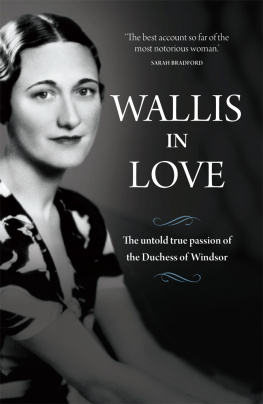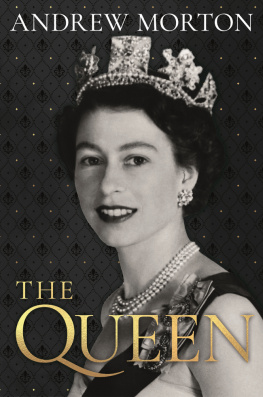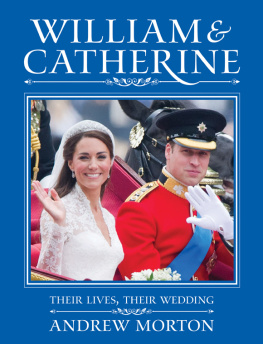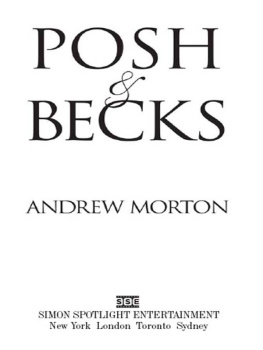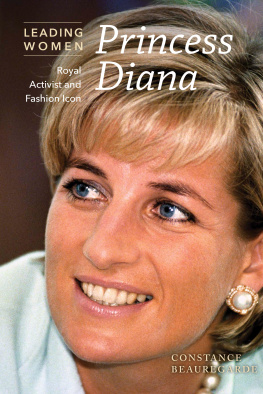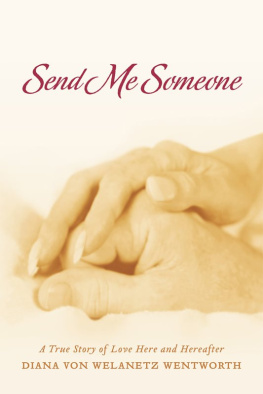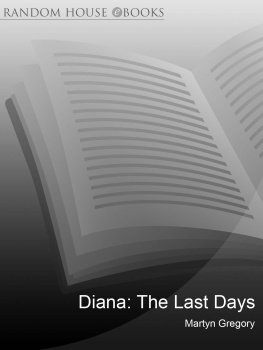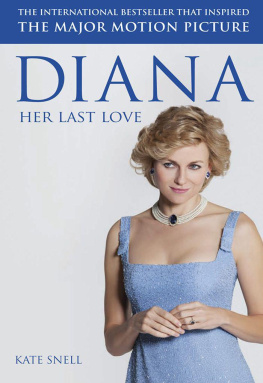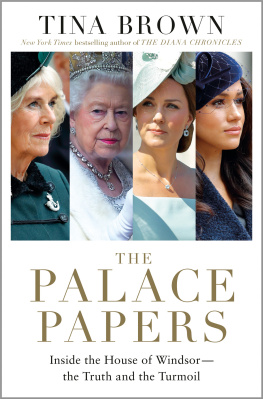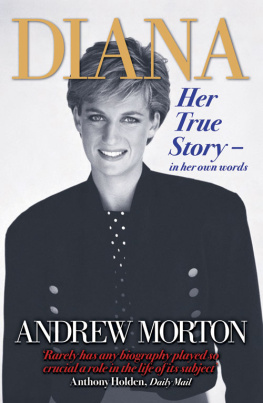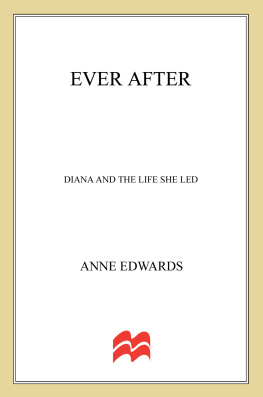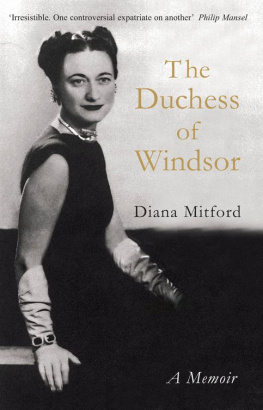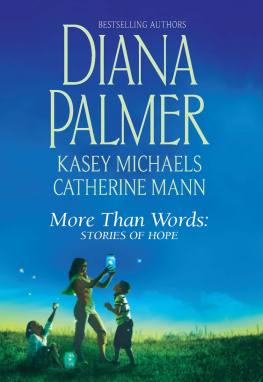
First published in Great Britain in 1992 as Diana: Her True Story by
Michael OMara Books Limited
9 Lion Yard
Tremadoc Road
London SW4 7NQ
This electronic edition published in 2011
The e-book edition is text only, with none of the images of the printed edition included
ISBN: 978-1-84317-715-9 in EPub format
ISBN: 978-1-84317-716-6 in Mobipocket format
ISBN: 978-1-84317-384-3 in paperback print format
Copyright Andrew Morton, 1992
All rights reserved. You may not copy, store, distribute, transmit, reproduce or otherwise make available this publication (or any part of it) in any form, or by any means (electronic, digital, optical, mechanical, photocopying, recording or otherwise), without the prior written permission of the publisher. Any person who does any unauthorized act in relation to this publication may be liable to criminal prosecution and civil claims for damages.
A CIP catalogue record for this book is available from the British Library.
Designed and typeset by Martin Bristow
www.mombooks.com
One of the worlds best-known biographers, Andrew Morton is a leading authority on modern celebrity, and one of the finest investigative writers of his day and age. His ground-breaking and controversial biography Diana: Her True Story changed the publics perception of the British monarchy, while Monicas Story, his authorized biography of Monica Lewinsky, gave voice to the true events behind the impeachment of US President Bill Clinton. More recently, Posh & Becks, his bestselling biography of celebrities David and Victoria Beckham, has been hailed as a critique of modern celebrity culture, and his Madonna shed new light on the most important female entertainer of the last two decades. His most recent book, Nine For Nine, a study of the dramatic rescue of nine trapped miners at Quecreek, Pennsylvania, in the summer of 2002, was especially praised by those who had been involved in the rescue.
He has won numerous awards, among them Author of the Year, Investigative Journalist of the Year and Scoop of the Year, as well as a special award for services to journalism. Diana: Her True Story was the second bestselling British book of the 1990s, and its reissue, after the Princesss death, as Diana: Her True Story In Her Own Words which revealed for the first time that she had co-operated in the writing of the book, and included her own testimony was the bestselling book of 1997. Millions of copies of both versions of Diana: Her True Story and its sequel, Diana: Her New Life, have been sold worldwide, and the former has been translated into more than thirty-five other languages.
Andrew Morton lives in London with his wife and two teenage daughters.
Contents
Acknowledgements
This biography of the Princess of Wales is unique in that the story contained in its pages would never have appeared had it not been for the wholehearted co-operation of Diana, Princess of Wales. The story is based on lengthy, tape-recorded interviews with Diana, supplemented by the testimony of her family and friends. Like Diana, they spoke with honesty and frankness in spite of the fact it meant laying aside the ingrained habits of discretion and loyalty which proximity to royalty invariably engenders. My thanks for their co-operation are therefore all the more heartfelt and sincere.
My grateful thanks, too, to the Princess of Waless brother, the 9th Earl Spencer for his insights and reminiscences, particularly about the Princesss childhood and teenage years.
My thanks also to the Baroness Falkender, Carolyn Bartholomew, Sue Beechey, Dr James Colthurst, James Gilbey, Malcolm Groves, Lucinda Craig Harvey, Peter and Neil Hickling, Felix Lyle, Michael Nash, Delissa Needham, Adam Russell, Rory Scott, Angela Serota, Muriel Stevens, Oonagh Toffolo and Stephen Twigg.
There are others whose positions prevent me from officially acknowledging their assistance. Their unstinting guidance has been invaluable.
My thanks to my publisher, Michael OMara for his guidance and support on the tortuous path from conception to completion, and to my wife Lynne for her patience and forbearance.
Andrew Morton
September 1997
Foreword
T HE TRAGIC DEATH OF D IANA , Princess of Wales on 31 August 1997 plunged the world into paroxysms of grief, despair and regret, unrivalled in the modern era. This spontaneous eruption of anguish was a sign not only of her enormous personal impact on the world stage but of the potency of her position, of what she represented as a woman and as a flag-bearer for a new generation, a new order and a new future. Even now we are still trying to come to terms not only with her loss but with what she meant to us, why those who never met her felt moved to a depth of grief that they would not display even for their own kith and kin. By some indefinable alchemy she had come to embody the spirit of the age, so that when we buried her we also laid to rest something of ourselves. Those who came in pilgrimage to lay flowers at Kensington Palace, her London home, wept not just for her but for themselves. Ironically, she was once asked what she would want as an epitaph on her grave. A great hope crushed in its infancy, was her reply, a phrase that unwittingly captured not only her short life but the spirit she represented.
Amid the tears and the flowers, there was guilt, shame and anger at the royal family who abandoned her and at the mass media who hounded her. The mood ran much deeper, demonstrating how far the temper of the times had changed; the tectonic plates which underpin society having shifted culturally, socially and politically in the previous few years. Just as the people had spoken in the elections of May 1997 which gave the Labour Party a historic landslide victory, so in the days before and during Dianas funeral they voiced their collective displeasure and disappointment at two other mighty, but unaccountable, institutions, the media and the monarchy, whom they believed had betrayed the wishes not only of Diana, Princess of Wales, but of themselves. She was of the people and for the people, and the Prime Minister, Tony Blair, captured that sentiment when he described her as the peoples princess.
When the Queen, standing at the gates of Buckingham Palace with her family, bowed her head to the gun carriage carrying Dianas coffin it was far more than a gesture of respect for a much-loved woman. It was also an acknowledgement of the passing of the old order, the ascendancy of a new ethic which Diana so vividly personified. In his electrifying funeral oration Dianas brother, Earl Spencer caught that mood; in just seven short minutes transforming himself from a little-known sprig of the aristocracy to a national hero. More important than his rapier thrusts at the royal family she needed no royal title to continue to generate her particular brand of magic and his more bludgeoning attack on the media, was the fact that his eulogy, both in delivery and sentiment, so clearly captured the spirit of Diana. Courageous, reckless, cherishing honesty and truth above the social niceties, cock-eyed in its logic, his address achieved what Diana had been struggling for throughout her adult life: to speak to the people over the heads of those who rule us, be they the royal family, politicians or the press barons. As the spontaneous applause following his oration showed, in her death Diana had found her champion.
In the months, years and decades that followed a momentous week in the life not only of Britain, but of the world, much was to be written and discussed about just what Diana meant to us as individuals and collectively as a society. As her life truly represented a parable of our times, this was not only right and proper but eminently desirable. At the same time a necessary evaluation of her life took place; as I was writing there were dozens of biographies, videos and commemorative albums under way. This, too, is inevitable, for we want to know about the personal attributes which propelled Diana into becoming a figure of such mythic proportions. In time the silt of history will cloud her memory; the memoirs of those who knew her, or thought they knew her, filtering and shifting the publics perception of a woman who has become the most cherished icon of the modern era. There is an enduring danger that Dianas perception of her life, an account she was so desperate to tell, will be obscured and revised with the passage of the decades.
Next page

